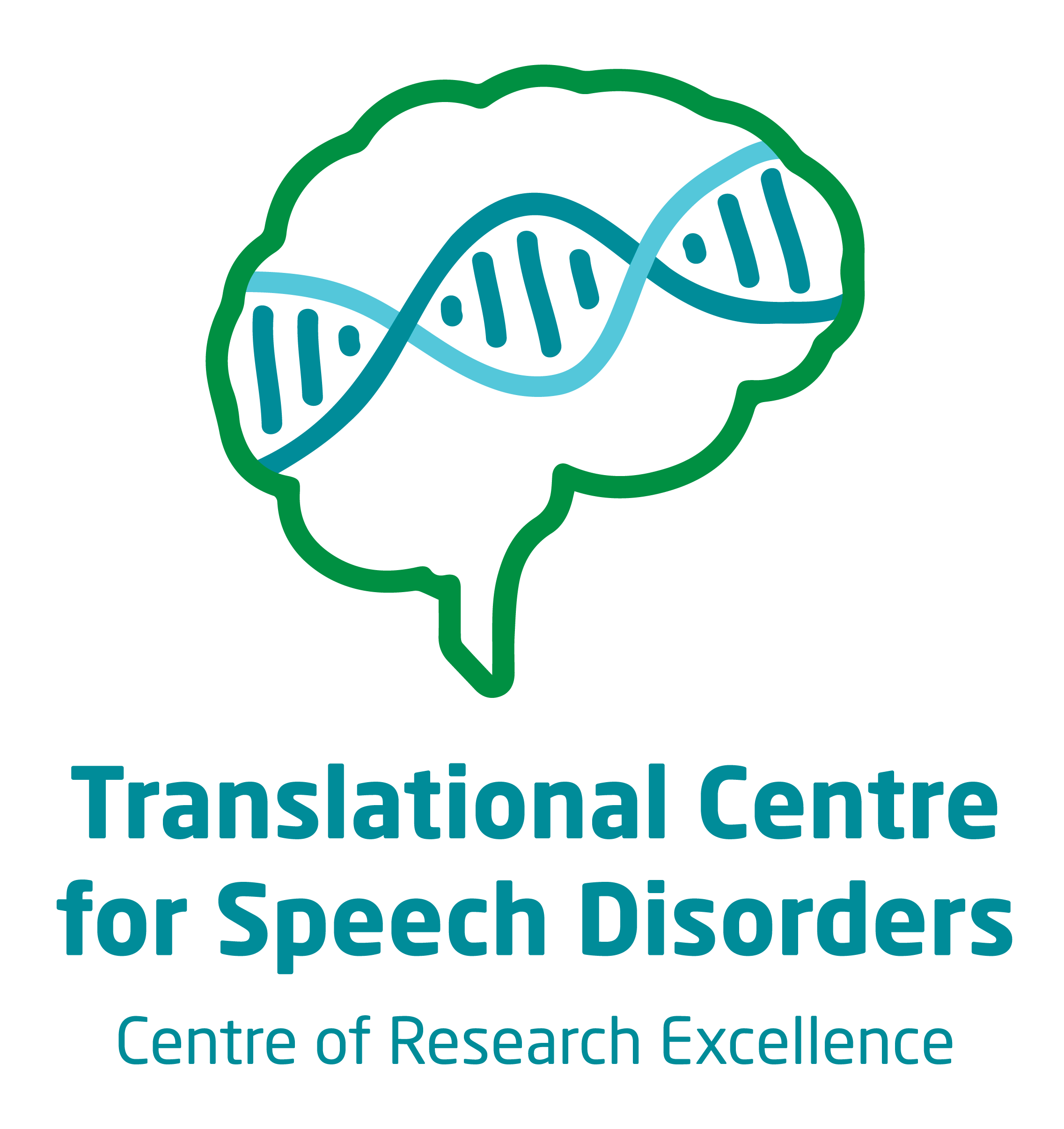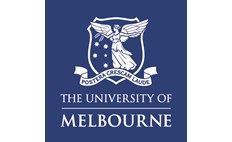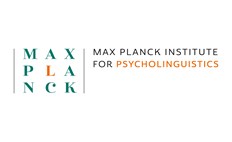FOXP1
What is FOXP1 syndrome?
FOXP1 is a gene found on chromosome 3. Individuals with FOXP1 syndrome have changes or ‘variants’ affecting the FOXP1 gene. Some individuals have variants in the FOXP1 gene only. Others have larger genetic variants that include the FOXP1 gene, as well as other genes which sit beside FOXP1 on chromosome 3p. The type and location of the variant may affect the severity and type of health and developmental conditions that are experienced by each individual person.
Contact
For further information, do get in touch with the CRE Speech and Language team at:
Email: geneticsofspeech@mcri.edu.au
Phone: (03) 9936 6334
Frequently asked questions
Individuals with FOXP1 syndrome may experience intellectual disability, autism, attention deficit/hyperactivity disorder, anxiety, repetitive behaviours, behavioural difficulties, such as obsessions, compulsions and aggression, and sensory symptoms.1,2,3,4
The age that children with FOXP1 syndrome start talking is different for every individual. Only one study has evaluated the age that children with FOXP1 syndrome developed first words. This study suggested that most children did experience some delay in language development, on average saying their first words between 14 and 42 months (average age 26.8 months) and first phrases between 24 and 96 months (average age 53 months).
Most children with FOXP1 syndrome will experience some delay in saying their first words and putting words together to form sentences, however the majority of children will be using verbal speech by the time they reach school at 5-6 years of age.1,2 While most children with FOXP1 syndrome will use verbal speech as their primary mode of communication, some will remain minimally verbal, and may use alternative and augmentative communication systems to support their communication.
In children who use verbal speech, most will experience speech production disorders. These usually include a combination of the following:
- Dysarthria, which is a condition affecting the strength and coordination of the muscles used to speak. Dysarthria can make speech difficult to understand, particularly for people who don’t know the person with FOXP1 syndrome very well, and are hence less familiar with their speech. Features of dysarthria are present in most individuals with FOXP1 syndrome (100% of individuals using verbal speech in our study had dysarthria1), although severity can range from mild to severe.
- Features of childhood apraxia of speech (CAS).1
- Articulation and phonological delay/disorder.1
Language (understanding and using words and sentences to communicate) is also affected in people with FOXP1 syndrome.1,2,3 Usually this affects both understanding (receptive language disorder) and use (expressive language disorder) of spoken and written language. In some people with FOXP1 syndrome, expressive language skills are relatively stronger than receptive language skills, and there is some evidence that this may be impacted by the type of genetic variant they have.1
At the moment, we do not have enough evidence to predict what an individual’s speech or language profile will look like based on their gene variant alone.
At the moment, we do not have evidence to show how speech and language develop over time in individuals with FOXP1 syndrome, but we do know that some speech and language difficulties are likely to persist into adulthood. Our team are currently studying changes in speech abilities over time in individuals with FOXP1 syndrome.
Please see our flyer or contact speechtracker@mcri.edu.au to learn more about the study and how to get involved.
Some individuals with FOXP1 syndrome do attend mainstream schools. Due to the Intellectual Disability and features of ASD, many attend supported education settings. This differs for every individual and usually depends on the presence and severity of Intellectual Disability, ASD and behavioural difficulties, the local schooling system and individual family preferences.
Speech production and language are affected in most individuals with FOXP1 syndrome.1 As such, it is critical that all individuals with FOXP1 syndrome are assessed across both speech and language domains, to determine their individual strengths, and identify areas that can be supported with therapy. Ideally, input from speech pathologists should start early in life to ensure children and families are supported to develop speech and language abilities from an early age.
Assessments should include:
- Speech production – specifically assessing for features of dysarthria (e.g. resonance, breath support, voice, pitch, articulation), childhood apraxia of speech (e.g. inconsistent productions, prosodic errors) and phonological delay/disorder.
- Expressive and receptive language abilities.
- Social/pragmatic language.
The assessment tools used may vary depending on a person’s age and individual abilities. Assessments should be conducted at various times throughout childhood, adolescence and adulthood to understand current abilities and determine the most appropriate supports.
Therapy/intervention:
Every individual's communication profile is different, and the treatment approach selected will depend on individual abilities, interests and needs. At the moment, there is no research to support use of any particular speech or language therapy approach for individuals with FOXP1 syndrome specifically. Rather, speech and language interventions should be chosen based on individual assessment results and the best available evidence for speech and language therapies more broadly. Some examples of evidence-based therapy techniques that may be suited to the features of FOXP1 syndrome are listed below:
- Dysarthria: There is some evidence that therapies targeting breath support for speech may improve speech intelligibility and voice quality in individuals with dysarthria.5 There is emerging evidence that the Rapid Syllable Transition Treatment (ReST6; a treatment developed for CAS, described below) program may also be beneficial for improving features of dysarthria in children.
- Childhood Apraxia of Speech: There are a number of treatments for childhood apraxia of speech (CAS), including Rapid Syllable Transition Treatment (ReST),6 the Nuffield Dyspraxia Programme version 3 (NDP-3), 6 Dynamic Temporal and Tactile Cueing (DTTC),7 and Prompts for Restructuring Oral Muscular Phonetic Targets (PROMPT).8
- Augmentative and alternative communication (AAC): Introducing an AAC system, for example sign language, or a picture exchange board, should be considered in the early years to supplement verbal communication development, supporting children to interact with family and friends, to learn, and to reduce undue frustration due to communication difficulties. The need for AAC and the type of system used may change over time. While most individuals with FOXP1 syndrome will go on to use verbal communication as their primary means of communication, some will remain minimally verbal. AAC may be helpful to support individuals who are minimally verbal to communicate.
At the moment, we do not have enough information to understand or anticipate the speech and language abilities that may be present in adolescents and young adults.
- For information and support on FOXP1: https://www.foxp1.org
- More information on dysarthria: Dysarthria Fact Sheet
- More information on CAS: CAS Fact Sheet
- More information on AAC: AAC Fact Sheet
For information on speech and language abilities and FOXP1 syndrome, please see our Fact Sheet.
References
- Braden, R. O., Amor, D. J., Fisher, S. E., Mei, C., Myers, C. T., Mefford, H., Gill, D., Srivastava, S., Swanson, L. C., Goel, H., Scheffer, I. E., & Morgan, A. T. (2021). Severe speech impairment is a distinguishing feature of FOXP1‐related disorder. Developmental Medicine & Child Neurology. https://doi.org/10.1111/dmcn.14955
- Trelles, M.P., Levy, T., Lerman, B. et al. (2021). Individuals with FOXP1 syndrome present with a complex neurobehavioral profile with high rates of ADHD, anxiety, repetitive behaviors, and sensory symptoms. Molecular Autism 12, 61.
- Siper, P.M., De Rubeis, S., Trelles, M.D.P., Durkin, A., Di Marino, D., Muratet, F., Frank, Y., Lozano, R., Eichler, E.E., Kelly, M., Beighley, J., Gerdts, J., Wallace, A.S., Mefford, H.C., Bernier, R.A., Kolevzon, A., & Buxbaum, J.D. (2017). Prospective investigation of FOXP1 syndrome. Molecular Autism, 8(1), 57.
- Rappold, G., Kostic, A., Siper, P., Braden, R.O., Morgan, A.T., Koene, S., Kolevzon, A. (2023). FOXP1 Syndrome. In: Adam, M.P., Mirzaa, G.M., Pagon, R.A., et al., editors. GeneReviews® [Internet]. Seattle (WA): University of Washington, Seattle; 1993-2023. Available from: https://www.ncbi.nlm.nih.gov/books/NBK594825/
- Pennington, L., Parker, N.K., Kelly, H., & Miller, N. (2016). Speech therapy for children with dysarthria acquired before three years of age. Cochrane Database Systematic Review, 18,7:CD006937.
- Murray, E., McCabe, P., & Ballard, K.J. (2015). A Randomized Controlled Trial for Children With Childhood Apraxia of Speech Comparing Rapid Syllable Transition Treatment and the Nuffield Dyspraxia Programme-Third Edition. Journal of Speech Language and Hearing Research, 58(3), 669-686.
- Murray, E., et al. (2014). A systematic review of treatment outcomes for children with childhood apraxia of speech. AJSLP, 23(3), 486–504.
- Morgan, A. T., et al. (2018). Interventions for childhood apraxia of speech. The Cochrane Database of Systematic Reviews, 5(5), CD006278.






